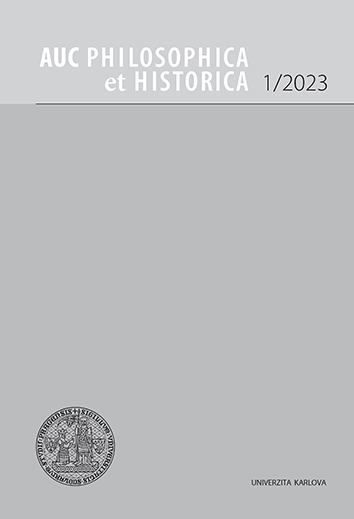AUC Philosophica et Historica (Acta Universitatis Carolinae Philosophica et Historica) is a multidisciplinary academic journal focused on the humanities with more than 50 years of tradition.
The journal is indexed in CEEOL, DOAJ, and EBSCO.
AUC PHILOSOPHICA ET HISTORICA, Vol 2010 No 1 (2010), 47–79
Prostor osmanského města v raném novověku
[Ottoman Urban Space in the Early Modern Period]
Markéta P. Rubešová
published online: 18. 05. 2015
abstract
Ottoman Urban Space in the Early Modern Period The research topic of space and its role in history will be tackled in the article Ottoman Urban Space in the Early Modern Period within urban realities of the sixteenth to eighteenth centuries. The Ottoman city is defined hereinafter as an urban settlement under the sovereignty of the Sultan that has been incorporated into the administrative system of the empire. The phenomenon of space is understood in both physical and metaphoric meaning, as a lived place experienced by its everyday users. The chosen perspective, therefore, is the one from within, as the life and town-related practices of local population will stand in the foreground. The study is based on mainly secondary literature that makes extensive use of primary sources, but occasionally, some primary sources are also consulted (court records, town chronicles, Rabbinic literature etc.). The author is inspired chiefly by approaches of anthropology and cultural geography. These disciplines seem to be essential in the quest for decoding the urban fabric, to start with a physical appearance and location of architectonic elements, their function and ways of maintenance, and to conclude with human geography of the city – people’s behaviour in a given space and the related distribution of social roles. Life in the city is viewed against the background of the categories of the private and public in combination with gender issues and the city-wide implications of social and religious diversity of the Ottoman urban population. In the first part, the author brings an overview of the up-to-date scholarship on the cities in the realm of Islam and offers a consensual definition of an Ottoman city. The categories of private and public spaces in a city are marked with a great deal of ambiguity regarding what exactly one understands under these concepts and how they are, if at all, applicable in a historical research. While the public is understood in the sense of a meeting place of strangers filled with communication, the notion of the private is examined in its psychological, physical, and legal dimensions. For the Ottoman realities, it was necessary to add two types of space – semiprivate and semipublic – that functioned as transitional spheres between the public and private both in psychological and legal sense. The next chapter presents the Ottoman city as a physical space with its specific design and infrastructure. One of the main indicators of the Ottoman, but also any other city in the realm of Islam, was the division between the commercial and residential quarters. There were of course some shared elements, like streets, public baths or fountains. Special attention is dedicated to the institutions located in the town center and other facilities like parks, gardens and coffeehouses, spaces of communication and conversation par excellence. Residential areas divided into neighbourhoods are described in a separate chapter with a special focus on the architectonic disposition of houses and their environs. When the physical and static urban elements have been studied, the author follows to examine symbolic meanings operating in the Ottoman city. Special attention is paid to the role of religious and social identity of the inhabitants and how this identity influenced their moving within the city and their identification with a neighbourhood expressed also by a communal solidarity and supervision. Every society creates specific hierarchy of values, including the perceptions of good and bad, acceptable and condemnable etc. Any such system of values ascribes great importance to concrete places of human action. Moral geographies aim at answering the question, why some buildings have to be erected in specific places, while it would be considered improper or even forbidden to use the same locality for a different type of building. In addition, human behaviour can be easier assessed when viewed in its spatial context. Indeed, physical and symbolic spaces of the cities developed hand in hand and were in the state of continual dialogue. The boundaries between the public and private were not firm and clearly delineated in the Ottoman city. The use of various places in the town depended on the religious, gender, and social identity of an individual. The feelings about a certain space – or its perception as private or public, or semiprivate and semipublic, evolved around three parameters: The type of place (house, courtyard, cafeteria, street etc.), time (daytime, night, specific periods) and human presence (the identity of people occupying the same place, their social and personal relations). From this perspective of contextual privacy, the author relates to the life in an Ottoman neighbourhood, the lack of privacy of information, and especially to women‘s behaviour in different places and situations.
periodicity: 2 x per year
ISSN: 0567-8293
E-ISSN: 2464-7055
